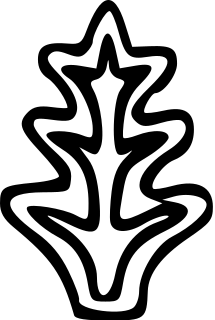
The 1st Panzer-Division was an armoured division in the German Army, the Wehrmacht, during World War II.

The German 218th Infantry Division (218.Infanterie-Division) was an infantry division of the German Army that served in World War II. It was organised along the standard lines for a German infantry division, and had about 15,000 men, 48 guns in its artillery regiment, and mobility was provided mainly by horse-drawn vehicles, it had about 5,000 horses. Its men moved predominantly on foot.

The 13th Panzer Division was an element of the German Army, the Wehrmacht, during World War II, established in 1940.

The 16th Infantry Division of the German Army was formed in 1934. On 26 August 1939 the division was mobilized for the invasion of Poland (1939). It participated in the Battle of France in August 1940. The division was then split, resulting in two independent units: The 16th Panzer Division and the 16th Motorized Infantry Division. The latter, from 1944 onward, combined with other non 16th elements, was known as the 116th Panzer Division.

The 334th Infantry Division was a German Army infantry division in World War II. Originally formed in November 1942, it surrendered to the Allies at the conclusion of the Tunisian Campaign in May 1943. The division was reconstituted on June 3, 1943 in France within the 1st Army, with the staff of the 80th Infantry Division as well as remnants of the old division and replacement units. It spent the remainder of the war serving on the Italian Front.

The 8th Panzer Division was a formation of the WehrmachtHeer. The division was formed by reorganising the 3rd Light Division in october 1939. It was transferred to the west and fought in the Battle of France, in May 1940, and the German invasion of the Balkans in April 1941. Soon after the division advanced towards Leningrad under Army Group North in Operation Barbarossa, and would remain on the eastern front for the remainder of the war. Staying on defensive fronts, it saw action in the relief of Kholm in 1942, Orel and the withdrawals of Army Group Centre in 1943, until transferred to Army group South. The division then fought in a series of retrograde movements, back through the Ukraine, into Hungary and finally into Silesia and surrender in May 1945.
The 4th Luftwaffe Field Division was an infantry division of the Luftwaffe branch of the Wehrmacht that fought in World War II. It was formed using surplus ground crew of the Luftwaffe and served on the Eastern Front from late 1942 to June 1944 when it was destroyed during Operation Bagration.
The 6th Luftwaffe Field Division was an infantry division of the Luftwaffe branch of the Wehrmacht that fought in World War II. It was formed using surplus ground crew of the Luftwaffe and served on the Eastern Front from late 1942 to June 1944 when it was destroyed during Operation Bagration.

The 32nd Infantry Division of the German Army was mobilized on 1 August 1939 for the upcoming invasion of Poland. At that time, it consisted of the usual German infantry division elements: three infantry regiments of three battalions each, one three-battalion regiment of light artillery, one battalion of heavy artillery, a Panzerjäger (anti-tank) Battalion, a reconnaissance (Aufklärungs) Battalion, a Signals Battalion, a Pioneer (Engineer) Battalion, and divisional supply, medical, and administrative units.

The 14th Panzer Division was an armoured division in the German Army during World War II. It was created in 1940 by the conversion of the 4th Infantry Division.

The 31st Infantry Division was a German infantry division of the Army during World War II. It participated in the invasion of Poland in 1939 then the invasion of France and the Low Countries in 1940. As part of Panzergruppe 2. of Army Group Centre, it was involved in the invasion of the Soviet Union in June 1941. After hard fighting throughout 1941 and 1942 it joined the 9th Army and fought in the Battle of Kursk in July and August 1943. Along with the rest of the 9th Army, the division conducted a fighting withdrawal for the remainder of 1943, during which it sustained heavy casualties. In the early stages of the Soviet Operation Bagration of June to August 1944, the 31st Infantry Division was destroyed, a fate which subsequently befell most of Army Group Centre. The division was officially disbanded on 18 July 1944.

The 242nd Infantry Division was a division of the German Army in World War II.
The 462nd Volksgrenadier Division was a Volksgrenadier division of the German Army during the Second World War, active from 1942 to 1944.
The 361st Infantry Division was an infantry division of the German Army during the Second World War, active from 1943 to 1945. It was redesignated as a Volksgrenadier division in 1944. It saw active service on the Eastern Front when the Soviets launched Operation Bagration, during which it suffered significant losses. It later fought in France before being absorbed by the 559th Volksgrenadier Division on 10 March 1945.
The 335th Infantry Division was an infantry division of the German Army during the Second World War, active from 1940 to 1944. It saw active service in France and on the Eastern Front and was destroyed in fighting in Romania in August 1944.
The 347th Infantry Division was an infantry division of the German Army during the Second World War, active from 1942 to 1945. Initially based in the Netherlands, it saw active service on the Western Front and was redesignated as a Volksgrenadier division in May 1945.

The 387th Infantry Division was an infantry division of the German Army during the Second World War, active from 1942 to 1944. It saw active service on the Eastern Front and was destroyed in fighting in Romania in August 1944.

The 376th Infantry Division was an infantry division of the German Army during World War II, active from 1942 to 1944 in two separate instances.
The 159th Infantry Division was an infantry division of the German Heer during World War II. The unit, at times designated Commander of Reserve Troops IX, 159th Division, Division No. 159, and 159th Reserve Division, was active between 1939 and 1945.
The 260th Infantry Division was an infantry division of the German Heer during World War II.











